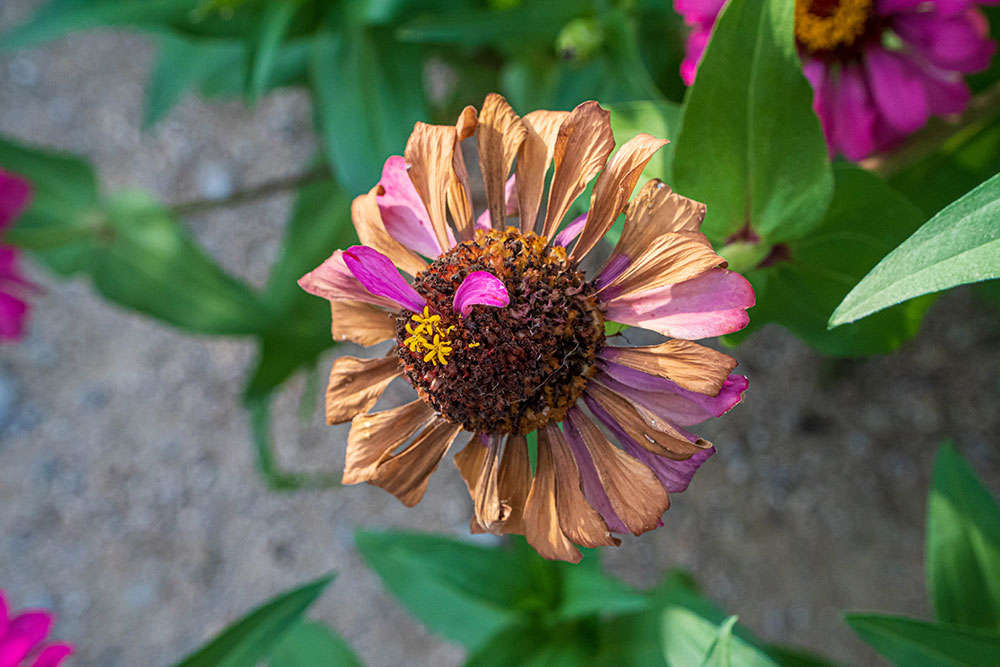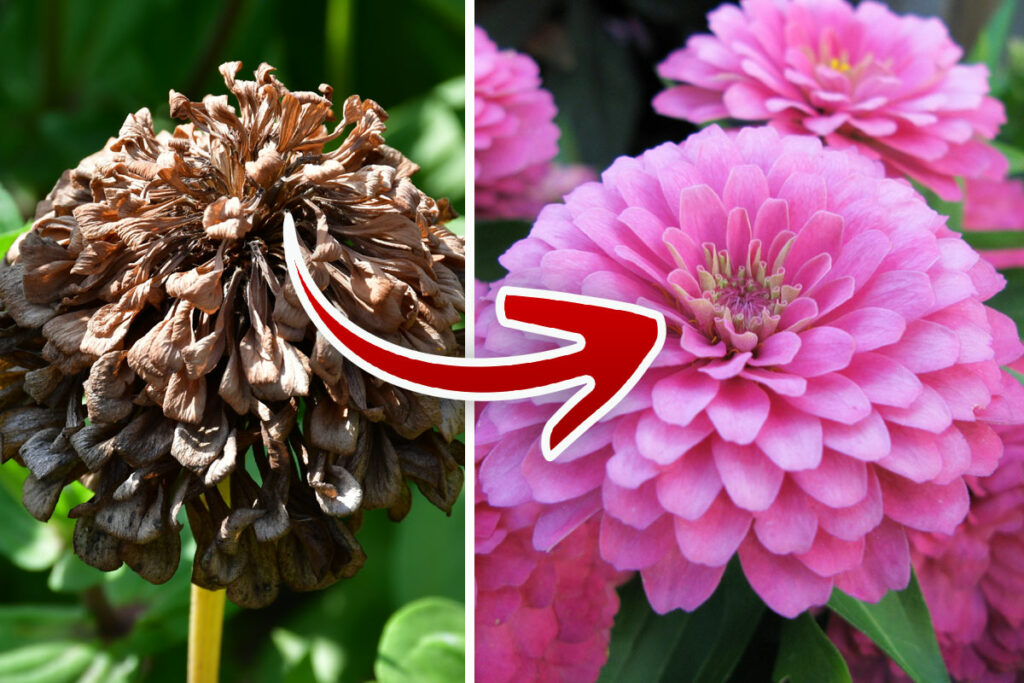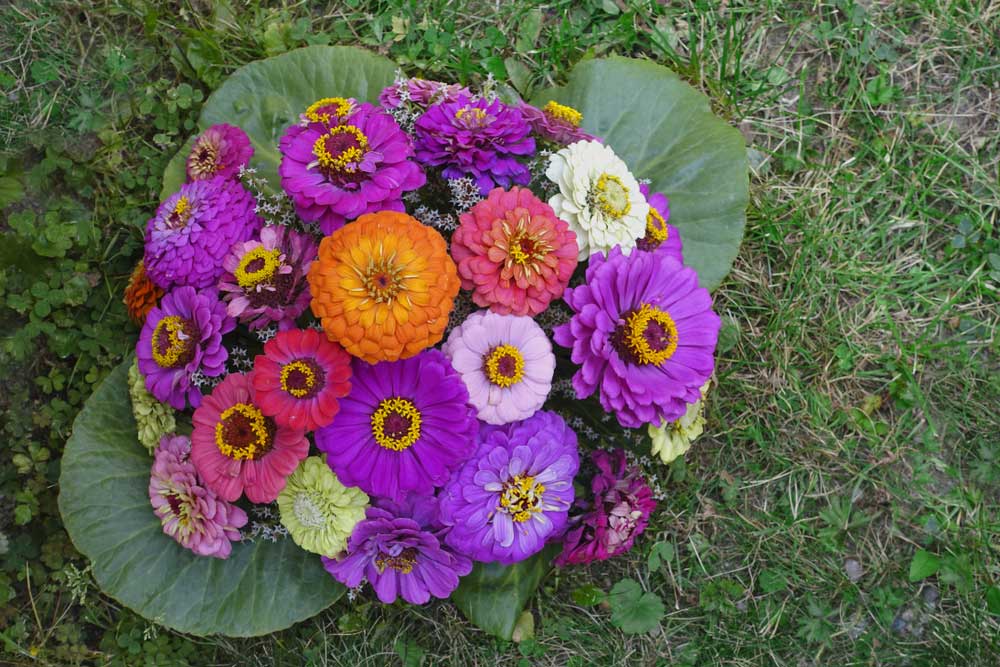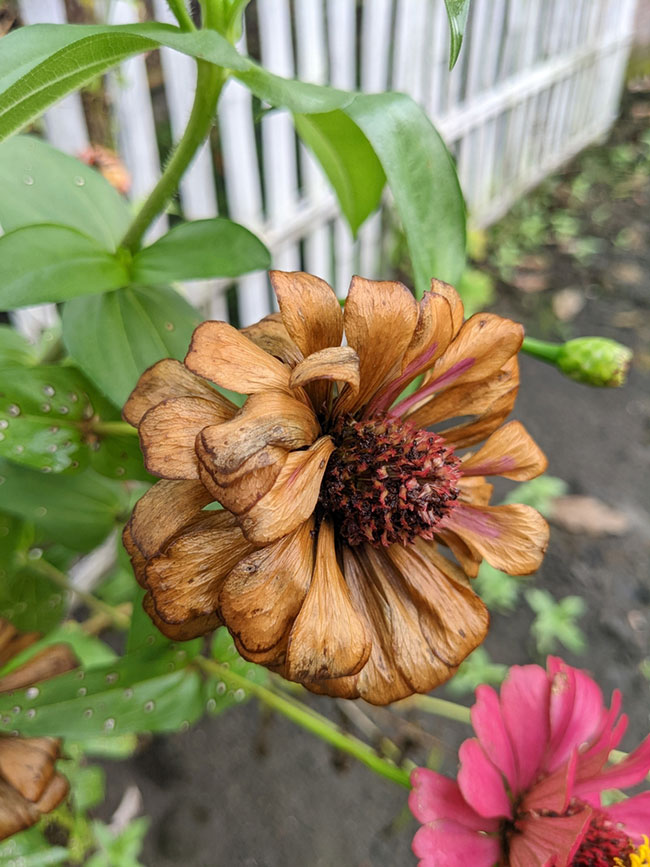Zinnias are vibrantly colored flowers native to Mexico and Central America. Ever since zinnias became popular, breeders have helped the flowers to evolve into different colors, and today you can purchase seeds for plants that will grow from six inches to three feet tall.
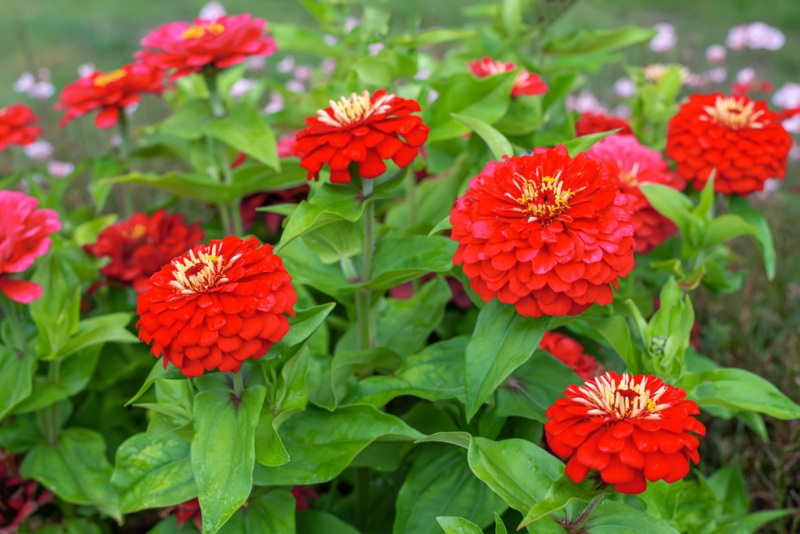
Zinnias make for perfect beginner gardener flowers. If you place the seeds in holes, they will germinate quickly, providing there is warm soil.
Common zinnias are annuals, so they will grow and bloom continuously for one season – but the original plant will not return the next year.
The best places to plant zinnias are in an annual or mixed border garden. Smaller zinnia plants are suitable for the indoors. It is suggested that gardeners grow their zinnias from seeds in the garden bed.
Zinnias are also sensitive to frost, so it is recommended that you do not seed until the last frost has passed.
Further, you can sow a round of seeds every week for several weeks to extend the flowering period.
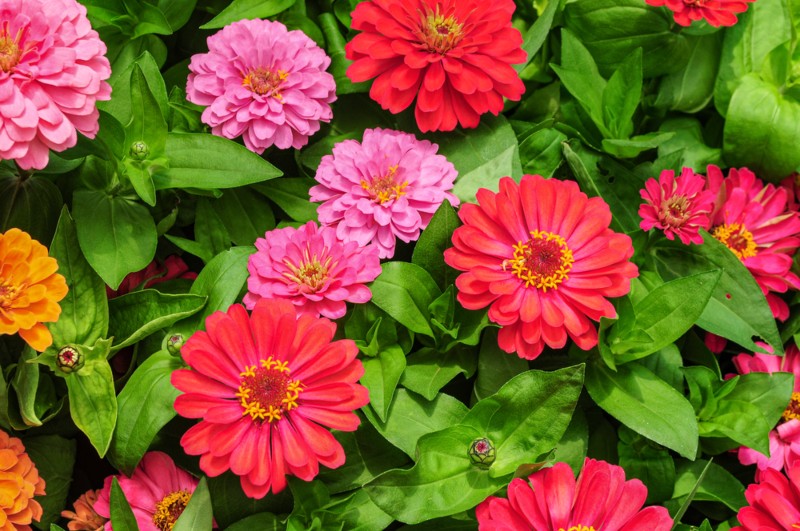
| Botanical Name: | Zinnia elegans |
| Common Name(s): | Zinnia |
| Plant Type: | Flower |
| Mature Size: | 1-3 feet tall |
| Sun Exposure: | Full sun |
| Water Needs: | Requires moist soil |
| Soil Type: | Well draining |
| Soil pH: | 5.5 – 7.5 |
| Bloom Time: | Late spring through first frost |
| Maintenance: | Low |
| Flower Color: | Pink, purple, yellow, orange, lavender, white, red, and green |
| Hardiness Zones: | Annuals in Zone 2-8, perennial in Zone 9-11 |
| Toxicity: | None |
Light
The best type of light for zinnias is in full sun because these flowers, having ancestry in Mexico and Central America, are used to warm climates. If you place your zinnias in spots with full sun, you will get bountiful blooms, which will also help keep the leaves dry and prevent mildew.
Water
Zinnias are resilient plants. They can tolerate drought with ease, and it is unlikely that you will need to provide any extra watering. If your soil has poor quality, add some compost to help the plant along. Due to their resilient nature, zinnias will grow even in bad soil.
Temperature
Zinnias like warmth, so it is best to grow them in conditions where the sun is plentiful. For this reason, many zinnia gardeners choose to plant their flowers outdoors. However, keep in mind that zinnias will usually be able to sustain themselves indoors as well. In terms of exact temperature, a range of 74 – 84 degrees Fahrenheit should do the trick for prize-winning zinnias.
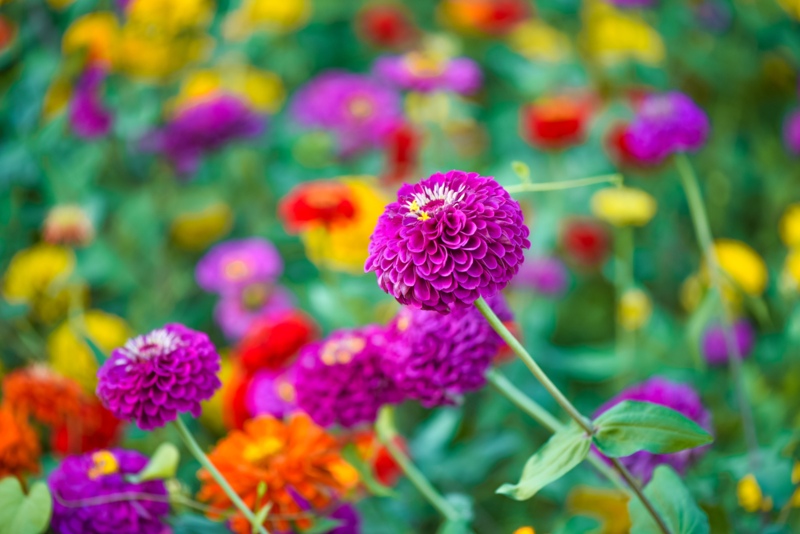
Soil
Zinnias will grow even in poor conditions, but to keep the healthiest plant it is recommended that fertile, well-drained soils high in organic matter are the best for this flower. It is important to host the plants in well-drained soil because the seedlings are prone to rotting in colder, damper soils.
Fertilizer
Since zinnias are pretty easy-going, low-maintenance plants, they simply need a well-balanced fertilizer to grow. These include balanced levels of phosphorus, nitrogen, and potassium. You can find these fertilizers at your local plant or hardware store.
Propagation
Zinnias can be propagated by division – using established plants – or with cuttings. To propagate a plant means to increase the number of plants of a particular species multiplying the plants you already have.
Propagating by division is a method by which new plants are not grown from seeds but are separated from the parent plant. Propagating with cuttings is to use the cuttings from the parent plant to create new plants – a lot of gardeners use this method to preserve some of the plants for next year’s growth as the winter months set in.
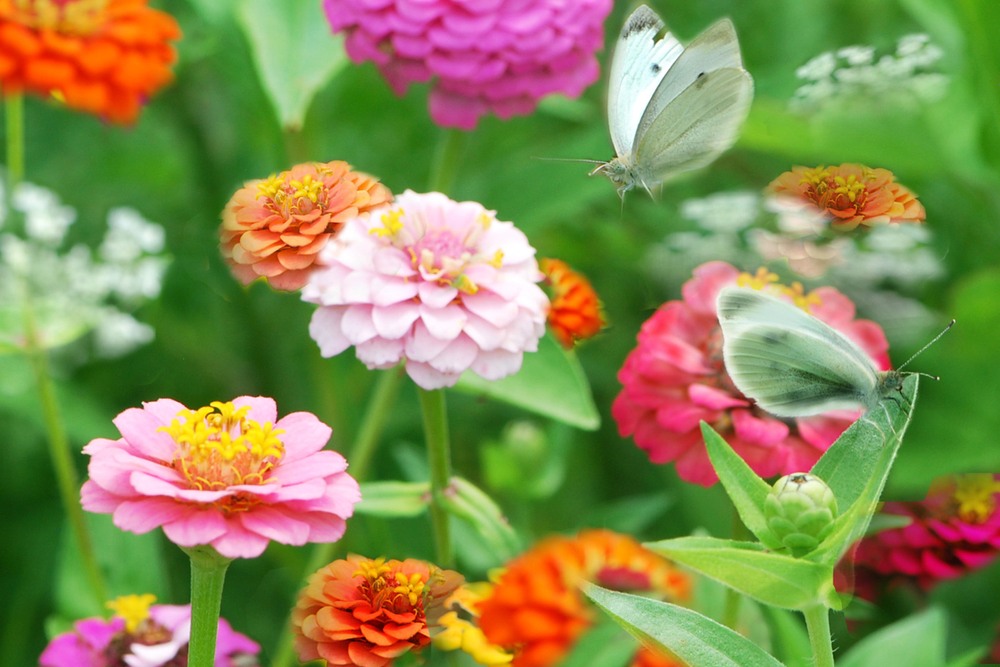
Deadheading and Pruning
Lucky for the active gardener, zinnias have been proven to grow bountiful flowers if they are pruned regularly. To prune your zinnias, ensure the plants themselves are at least eight to twelve inches tall. Furthermore, make sure you choose the right time of day to prune. It is recommended to prune zinnias in the morning because, by afternoon, the sun’s rays are harsher. It is important to use sterilized sheers, and you should aim to cut the top of the plant that is four inches below the leaves.
Growing From Seed
Zinnias are widely known for being able to easily grow from seed. Direct sowing is an acceptable way to start the growth. Direct sowing simply means that you start planting seeds in the garden instead of buying smaller plants or starting seeds indoors, then bringing them outside. To do this, all you’ll need is confirmation of warm soil and no chance of another frost.
However, it is perfectly fine to start the seed indoors as well. To do this, start the seeds about four to six weeks before your last frost date.
Are They Toxic?
These well-performing annual flowers are easy-to-grow and maintain and are not toxic to animals or humans.





